The Mitosis DNA Program: Rethinking Chain Incentives for Sustainable DeFi Growth
Let’s explore how Mitosis solves the chain incentive problem through smart token design, evolving governance, and long-term alignment.
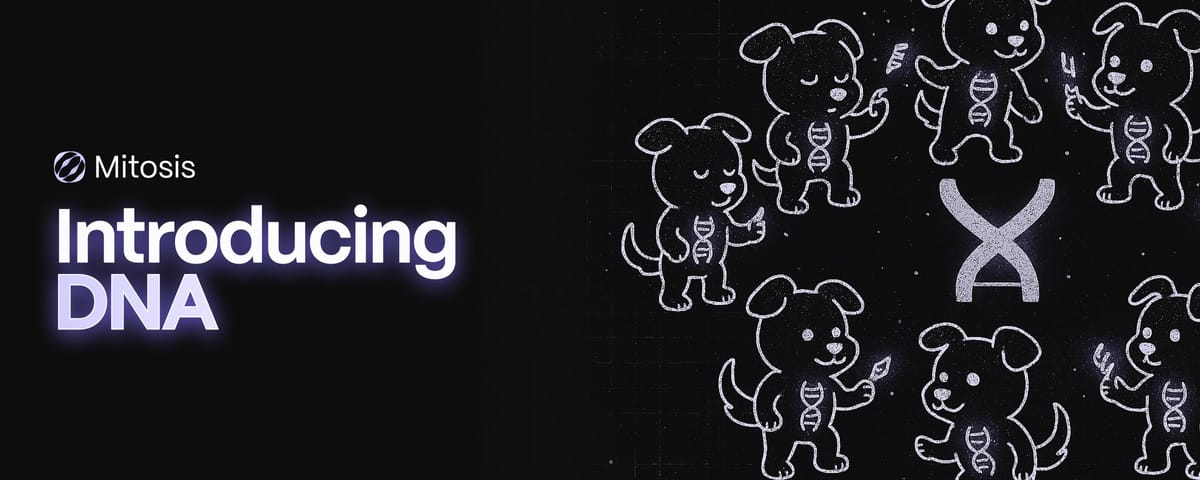
Introduction
Why do most blockchains lose momentum after launch?
Despite bold visions and massive funding, many projects stumble due to one recurring flaw: misaligned incentives.
In DeFi, users chase the highest APYs, validators focus on block rewards, developers build in silos, and liquidity providers come and go. The result? Ecosystems that struggle to grow sustainably.
The Mitosis DNA Program, short for Operations and Rewards Strategic Engagement, offers a different path. It doesn’t just reward participation. It builds a system where everyone's success depends on everyone else's.
Let’s explore how Mitosis solves the chain incentive problem through smart token design, evolving governance, and long-term alignment.
The Chain Incentive Problem: Why Most Models Fail
At the heart of most failing blockchain ecosystems is a misalignment between key stakeholders:
- Users jump chains for higher yields.
- Validators secure networks with no interest in application growth.
- Developers build with little assurance of lasting support.
- Liquidity Providers (LPs) get no say in where their capital goes.
This creates short-term thinking. Some projects rely on central foundations to direct incentives, while others use rigid formulas. But both approaches fall short—either they're too centralized or too inflexible to respond to real-world dynamics.
The DNA Program: Aligning Incentives Through Design
Mitosis’s DNA Program reimagines ecosystem incentives from the ground up.
At its core is a simple but powerful idea: reward real value creation over time.
Participants who meaningfully contribute to Mitosis, whether by providing liquidity, staking, developing dApps, or engaging in governance, earn more than tokens. They gain growing influence over the ecosystem itself.
This approach is built on three key innovations:
1. A Three-Token Architecture
The DNA Program uses three distinct tokens, each with a specific role:
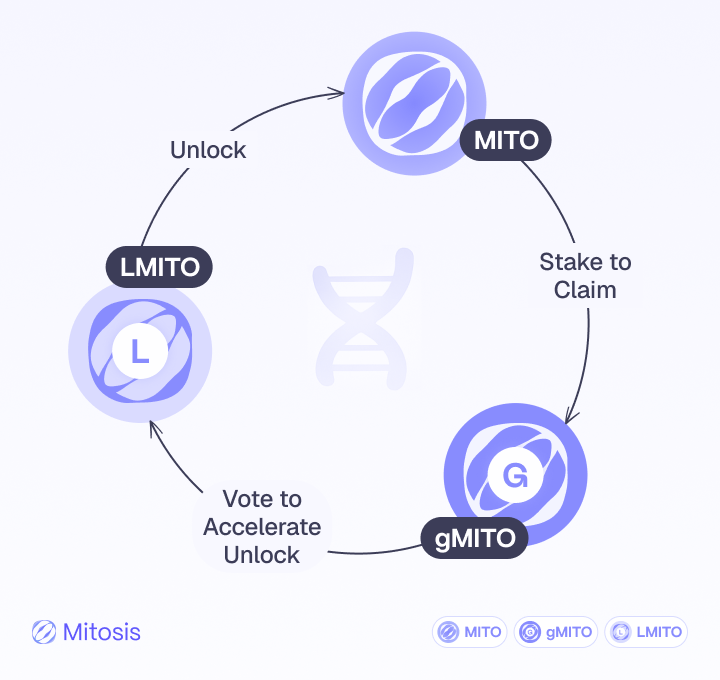
- MITO (Utility Token):
- Used for gas fees and staking to validators (21-day unstaking).
- Transferable and central to DeFi activity.
- Gains value as chain usage grows.
- gMITO (Governance Token):
- Non-transferable and earned by staking MITO.
- Grants voting rights over vaults, dApps, and fees.
- Immune to vote-buying and flash loan exploits.
- Represents long-term alignment.
- LMITO (Locked MITO):
- Time-locked rewards that convert into MITO over time.
- Unlock speed increases with active governance participation.
- Non-transferable until unlocked—designed for patient participants.
This structure creates healthy tension between short-term utility and long-term governance, balancing ecosystem needs across timeframes.
2. The Distribution Engine: How Rewards Flow
The DNA Program directs LMITO rewards to the areas generating real value:
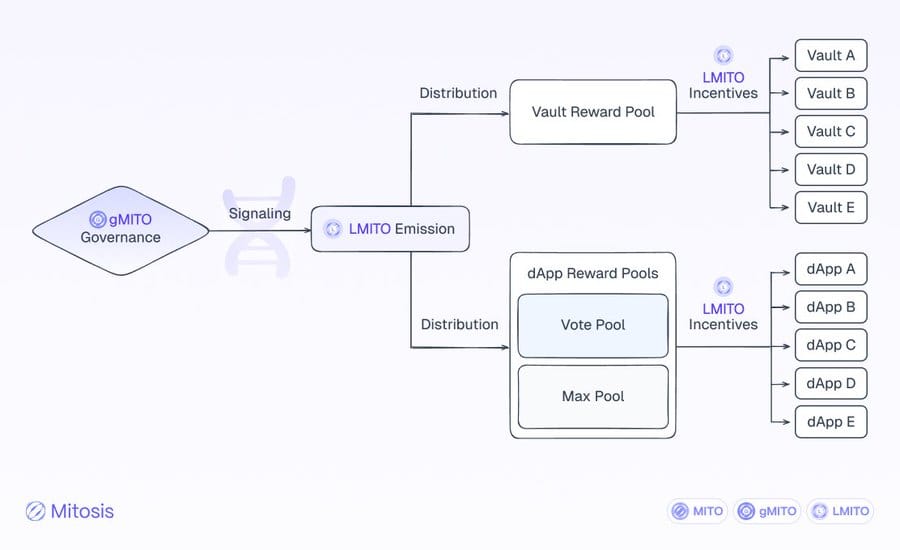
Vault Reward Pool
- Vaults bring external liquidity to Mitosis.
- gMITO holders vote on which vaults receive what % of rewards.
- This creates a flywheel: useful vaults get more votes → more rewards → more liquidity → even more votes.
dApp Reward Pools
Two complementary streams fund application development:
- Max Pool (Formulaic):
- Rewards dApps based on how much MITO or MITO derivatives they use.
- Encourages dApps that deeply integrate the native token.
- Vote Pool (Governance):
- Allows gMITO holders to vote on dApps needing early support or acceleration.
- Adds flexibility to prioritize innovation and community needs.
This dual system blends objective math with governance-driven strategy.
Benefits by Stakeholder: Everyone Wins Long-Term
The DNA Program ensures that every key participant gains in a way that aligns with ecosystem health.
→ DeFi Users: Earn More By Staying
- Vault rewards + governance acceleration = higher long-term yield.
- Voting rights give users a voice in shaping incentives.
- Participation in ecosystem decisions grows over time.
→ Validators: More Than Block Producers
- Earn gMITO for staking services.
- Influence reward flows through voting.
- Incentivized to support dApps that grow the network.
→ Developers: Predictable and Flexible Funding
- Whitelisted dApps receive automatic MITO-based rewards.
- Early-stage projects can receive governance-backed support.
- Built-in liquidity access via vaults and protocol integration.
→ Vault Projects: Strategic Partners
- Get first access to ecosystem incentives.
- Influence their own reward mechanics via governance.
- Benefit from token flywheels and cross-protocol synergies (e.g., Theo Network).
Governance That Actually Works
Unlike most DAOs, Mitosis governance avoids common traps:

- One gMITO = One Vote: No special privileges.
- Time-weighted power: Reflects long-term alignment, not just wallet size.
- Non-transferability: Stops vote buying, flash loans, and Sybil attacks.
gMITO holders manage key levers of the ecosystem:
- Fee percentages on vaults.
- Revenue flows (treasury, dev funds, or governance participants).
- Reward distribution ratios and vault-specific rules.
This creates a dynamic system that can evolve with the community’s needs.
A Phased Rollout: Growing With the Ecosystem
The DNA Program doesn’t launch all at once. It evolves as Mitosis grows:
Phase 1: Foundation First
- Mitosis Chain and staking go live.
- MITO and gMITO mechanics begin.
- The Foundation makes initial decisions.
- The community gets familiar with the system.
Phase 2: Community Control
- LMITO emissions begin.
- Governance chooses between vaults and dApps.
- Vault fee and reward structures are activated.
- Governance takes over key economic parameters.
This careful rollout ensures stability now and decentralization later.
Why the DNA Program Succeeds Where Others Fail?
Most chains try to fix incentives with brute force—more rewards, more complexity, or more math.
The DNA Program takes a systems-thinking approach:
- Aligns all stakeholders with one another.
- Encourages patience and long-term commitment.
- Offers adaptable governance as conditions change.
- Distributes power based on contribution, not speculation.
It’s a framework that evolves with its community and actually works in practice.
Conclusion
The Mitosis DNA Program isn’t just another rewards scheme—it’s a full-stack incentive engine built for sustainability.
By combining smart token design, participatory governance, and strategic reward flow, self-reinforcing DeFi ecosystem users, validators, builders, and protocols all win together.
As blockchain moves beyond hype into real adoption, models like DNA will define the next generation of sustainable, community-led networks.
The future of DeFi might just be written in Mitosis’s DNA.
Stay in the Loop
Follow developments at mitosis.org, app.mitosis.org, or on X via @MitosisOrg.
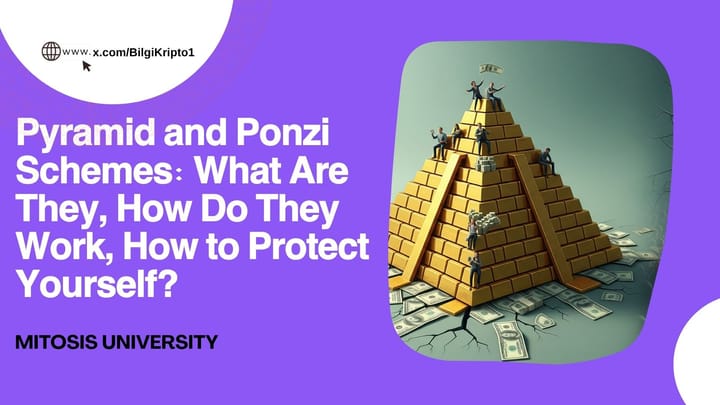
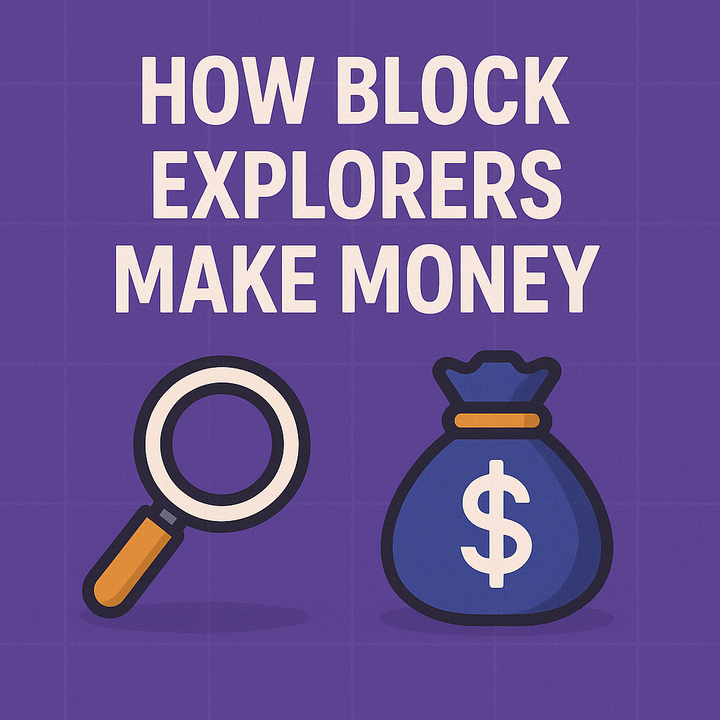
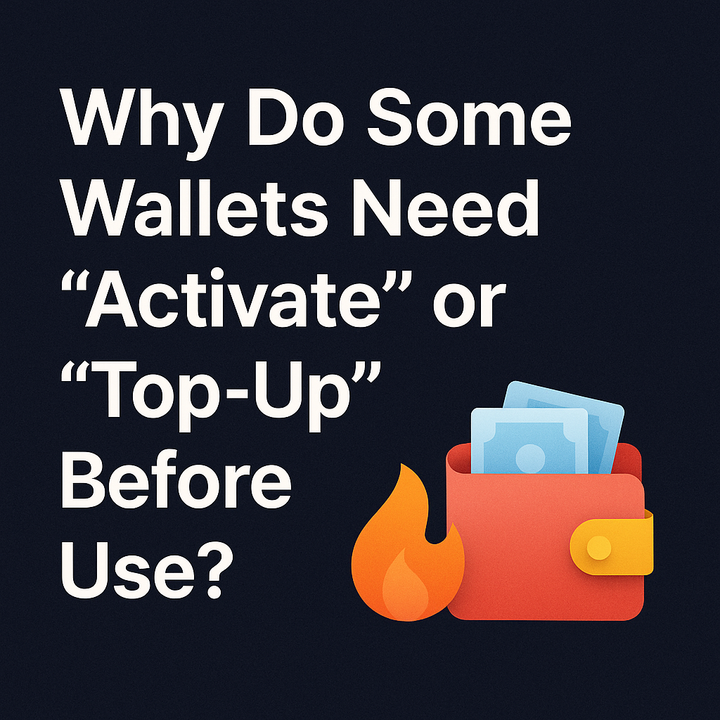
Comments ()